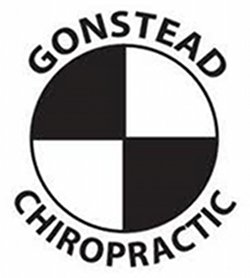A lot of patients seek us out because we use the Gonstead system. It is a method of chiropractic used to analyze and care for the spine in a gentle, effective, and specific way. It is precise and meticulous in evaluating and adjusting the spine. The method was based on the work of Dr. Clarence Gonstead who spent his life developing a complete system of biomechanical analysis for chiropractic. Dr. Gonstead gave over 4 million adjustments in his career and was able to help thousands of people in his renowned Gonstead Clinic of Chiropractic in Mt. Horeb, Wisconsin, a town of around 2,000 people at the time. Patients came from all around the world to see him, even some from other chiropractors. Learning the Gonstead Technique takes a great deal of practice and dedication but allows us to find the true cause of your problem and make a specific adjustment. Thoroughly examining the spine before adjusting it ensures that we know when to adjust your spine and even when not to, creating a normal biomechanical state in your spine which enables your body to make the necessary corrections.
The Gonstead system approaches the spine biomechanically – which means that we relate the structure of the spine to how we will adjust it. It begins with a basic biomechanical principle of physics. Just as engineers and architects realize the importance of a proper foundation, we realize that a proper foundation in the body is vital as well. This ensures durability and strength and any change or shift in the foundation can create deviation throughout the structure. The body’s foundation is formed by the pelvis. When this bony structure consisting of hip bones and the lower bones of the back is level, there will be maximum balance and stability in the spinal column. When the pelvis or any of the vertebrae become displaced from their proper position and become fixated (stuck) in the improper position, adverse changes may occur in the body. As important as the foundation is, any malfunction in the spine can cause adverse effects. Many of the problem areas of pain and spasm are really compensations to the real problem. Our job is to find the key and true cause of your problem.
“Find the subluxation
Accept it where you find it
Correct it
Leave it alone”
-Dr. C.S. Gonstead
The Gonstead Chiropractor conducts a thorough analysis of your spine using five criteria to determine where a subluxation has occurred.
Visualization – Looking at your posture, the way you move and even how the tissues appear. We are experts in looking for subtle changes in your posture and movement which could indicate any problems.
Instrumentation – The instrument of choice in the Gonstead System is the Nervoscope. The Nervoscope detects uneven distributions of heat along the spine which can be indicative of inflammation and nerve pressure and irritation. This instrument is guided down the length of your back and feels like two fingers gliding down each side of your spine.
Static Palpation – This is simply the process of palpating (feeling) your spine in a static (stationary) position. We will feel for the presence of swelling, tenderness and any abnormal texture or tightness in the muscles and other tissues.
Motion Palpation – This process involves feeling the spine while moving and bending in various positions. This enables us to determine whether or not each individual vertebra is functioning normally. Some may not have as much motion as they should while others may move too much.
X-Ray Analysis – X-rays enable us to visualize the entire structure of your spine. This is helpful in evaluating posture, joint and disc integrity, vertebral misalignments and ruling out any pathologies, or recent fractures that may be present or contributing to the your condition. X-rays are taken in the standing, weight-bearing position to fully validate the examination findings. In some cases, problems will not show up it they are not taken weight bearing, just like a flat tire doesn’t look very flat if you lay it on it’s side without any weight on it.
After a complete analysis, we are ready to explain our findings and make a recommendation to the best solution to meet your goals. We also now have the necessary information to deliver an adjustment. The focus of the Gonstead adjustment is to be as specific, precise and meticulous as possible, addressing the key problem areas. Great care is taken to ensure a biomechanically correct adjustment and we think you will find they are very comfortable.



